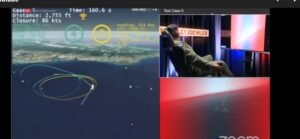
Heron Systems Inc. took first place in the third and final competition in DARPA’s AlphaDogfight trials (ADT) on Aug 20 between artificial intelligence (AI)-enabled F-16 simulators and U.S. Air Force, Navy, and Marine Corps pilots. Founded in 1993, Heron is a small AI firm located near Patuxent Naval Air Station, Md. To win the final round, Heron's AI agent, "Falco," took out in five separate dogfights an F-16 simulator helmed by "Banger," an elite F-16 pilot, a graduate of the…














